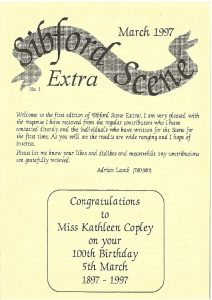Mike Etherington-Smith is a well known builder of three day event courses. He has been asked to bid for the job of building the course for use at the Olympic games in Sydney in the year 2000. Here is his diary of the events leading up to the decision being made by the organisers about whom the contract would be awarded too.
3/10/96. UK. Fax arrives from FEI (Federation Equestre lnternationale, The governing body of all equestrian sports worldwide) informing me that three of us have been nominated to SOCOG (Sydney Organising Committee for the Olympic Games) from whom they select one for the job of Course Designer for the Three Day Event at the Sydney 2000 Olympic Games.
23/10/96. USA Working at Fairhill international Horse Trials in Maryland. Fax unexpectedly arrives from SOCOG requesting that the three of us (another Brit, a German and myself go to Sydney on 4th November for six days for a site inspection of the proposed equestrian facility/venue. Need to take this seriously and so call home, 1am UK time, wake everybody up and try to have meaningful conversation about any other commitments scheduled for early November.
24/10/96. USA Another fax from down under saying that tickets had been booked – this is serious! Fax back saying hang on for 24 hours. Better half calls to say that all commitments rearranged – where would I be without her?
25/10/96. USA Fax from Sydney to say that all flights and accommodation booked. It is happening.
30/10/96.UK Back home for a couple of days and catch up with everything.
2/11/96. Weekend in Ireland at Blarney Castle to look at the courses for their event which will take place next June. Kiss ‘The Stone’! — could this be a good omen?
4/11/96. Off to Sydney, Arrive 6/11/96 – What happened to Tuesday? Taken to hotel, quick shower and off to first meeting/briefing. Two hours later taken to proposed site 40 minutes from City Centre; first impression is rather depressing, it reminds me how fortunate we are in the UK. The sheer enormity of the task hits me. The site is extremely hilly, it is clay, it is not very big and it is a mess – what’s more, the best piece of ground is out of bounds! – and yet this has to be transformed into an international equestrian centre and the venue for the equestrian and mountain biking events at the Olympics. At dinner it transpires that we all have the same feelings (unless of course this is gamesmanship).
7/11/96. Explore City Centre before breakfast. The hotel is right next to the Harbour Bridge and the Opera House; decide to come to Olympics if we can afford it even if the job goes to one of my colleagues. Another long meeting when we are each given mountains of paperwork, various maps and plans plus several studies of the site considering issues such as environmental impact, archaeological and historical remains, flora, fauna, etc, all containing some very long and rather off-putting words! Sneaky feeling that there is more to come. Further site meeting; advised not to wear shorts in the long grass – snakes. Terrific!
8/11/96. Wolfgang has to leave. 10.30am, meet Deputy Minister for the Olympics who is almost young enough to be one of our children. Press the flesh etc and decide that a farewell beer is in order. Feel good for a 1.30 meeting until we are all given the tender document, another serious tome.
9/11/96. Spend all day on site. Breakthrough. Start to feel that it can be done and that all the associated requirements such as spectator and TV considerations can be dovetailed together. Conceptual ideas start to develop in the little grey cells.
10/11/96. Day off. Do a couple of hours work and we are then spoiled by being taken sailing in the harbour for the day. What a place. Buy another case to get the paperwork home.
11/11/96. Head home with two weeks in which to put the tender together.
25/11/96. Eight full days gathering information, reading all the papers and putting the proposal on paper in the required order, not something that course designers are good at. TNT the documents to Sydney.
Friday 13/12/96. Fax arrives wanting more information in Sydney within three days. Rearrange the day and send the necessary with TNT. Note the day!
17/12/96. Fax arrives; nothing has reached Sydney. Call TNT and have forthright discussion. Package is stuck in Australian customs – great.
20/12/96. Package finally reaches destination – is it too late?
23/12/96. 8.15am. Phone call followed by champagne followed by headache followed by panic!
Hopefully we will hear more about the project as we move towards the event.
